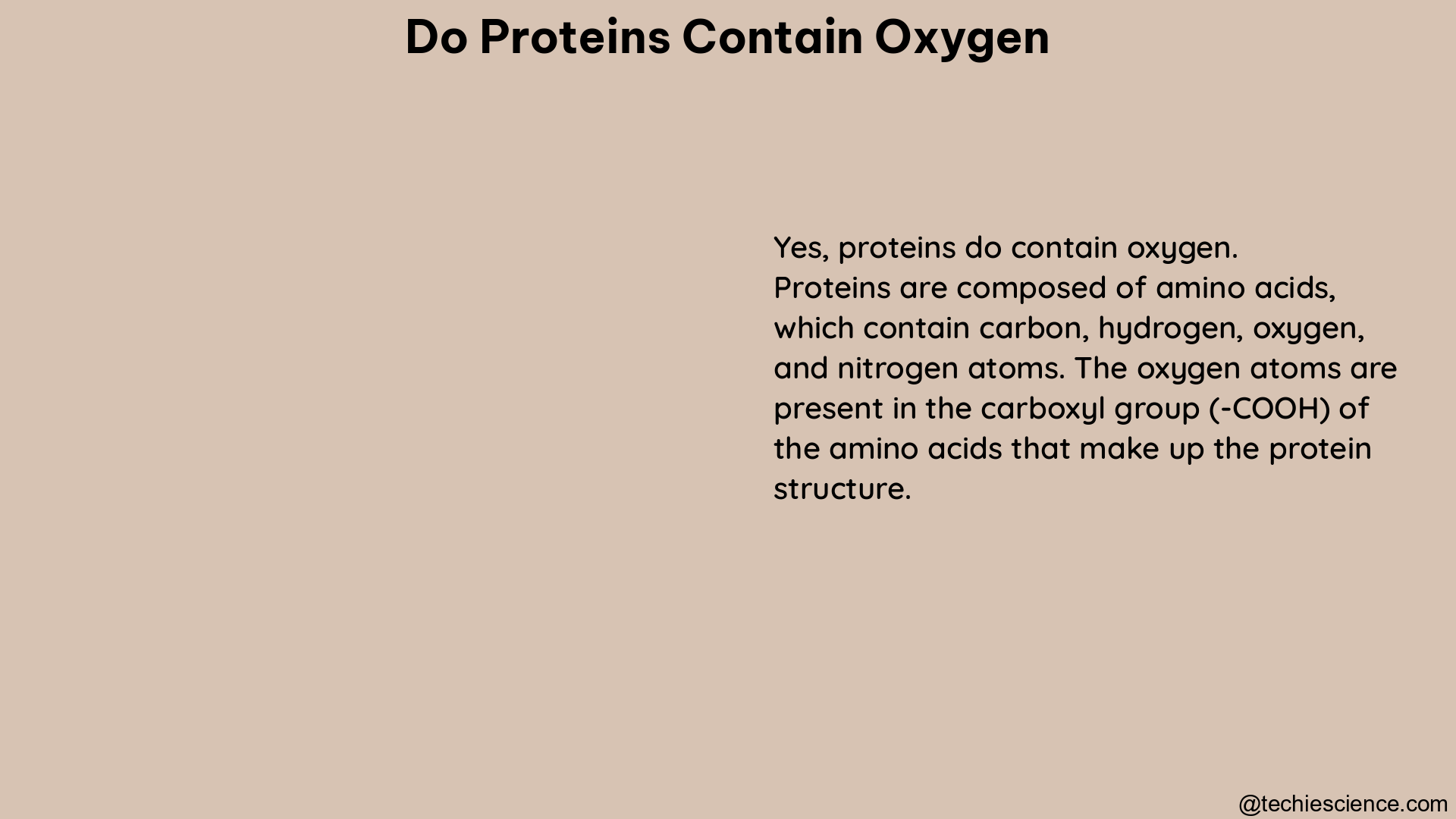Proteins are the fundamental building blocks of life, responsible for a vast array of functions within living organisms. While proteins do not directly contain oxygen as a structural component, they play a crucial role in the transport and utilization of this essential element. In this comprehensive guide, we will delve into the intricate relationship between proteins and oxygen, exploring the mechanisms by which proteins facilitate the movement and storage of this vital gas.
The Role of Hemoglobin in Oxygen Transport
One of the most well-known examples of proteins involved in oxygen transport is hemoglobin, a complex protein found in red blood cells. Hemoglobin is composed of four polypeptide chains, each containing a heme group, a prosthetic group that houses an iron atom. These iron atoms are responsible for the binding and transport of oxygen throughout the body.
When oxygen is inhaled into the lungs, it diffuses into the bloodstream and binds to the iron atoms within the heme groups of hemoglobin. This oxygenated hemoglobin is then carried by the circulatory system to the body’s tissues, where the oxygen is released to be utilized in cellular respiration. As the oxygen is released, the iron atoms in the heme groups change from a ferrous (Fe2+) to a ferric (Fe3+) state, allowing the hemoglobin to then bind to carbon dioxide, a waste product of cellular respiration, and transport it back to the lungs for exhalation.
The oxygen-carrying capacity of hemoglobin can be quantified using various techniques, such as spectrophotometry and gas chromatography. Spectrophotometry measures the absorption of light by hemoglobin at different wavelengths, which can be used to determine the amount of oxygen bound to the heme groups. Gas chromatography, on the other hand, separates and quantifies the gases, including oxygen and carbon dioxide, present in a blood sample.
Myoglobin: Oxygen Storage in Muscle Tissue

In addition to hemoglobin’s role in oxygen transport, other proteins are involved in the storage and utilization of oxygen within cells. Myoglobin, a protein found in muscle tissue, plays a crucial role in the storage and delivery of oxygen to mitochondria, the powerhouses of the cell where cellular respiration takes place.
Myoglobin, like hemoglobin, contains a heme group with an iron atom that can bind to oxygen. However, myoglobin has a higher affinity for oxygen than hemoglobin, allowing it to store oxygen within muscle cells for use during periods of increased metabolic activity, such as exercise. This stored oxygen can then be released to the mitochondria, where it is used in the production of ATP, the primary energy currency of the cell.
The concentration of myoglobin in muscle tissue can vary depending on the type of muscle and the level of physical activity. For example, the muscles of endurance athletes, such as long-distance runners, typically have a higher concentration of myoglobin compared to the muscles of more sedentary individuals. This increased myoglobin content allows endurance athletes to maintain a higher level of aerobic activity for longer periods.
Oxidative Damage to Proteins
While proteins do not directly contain oxygen as a structural component, they can still be affected by oxidative damage. Oxidation is a chemical reaction that involves the transfer of electrons from a substance to an oxidizing agent, such as oxygen. This process can lead to changes in the structure and function of proteins, which can have significant consequences for the overall health and function of an organism.
One of the primary mechanisms of oxidative damage to proteins is the formation of reactive oxygen species (ROS), which can include molecules such as superoxide (O2-), hydrogen peroxide (H2O2), and hydroxyl radicals (OH-). These ROS can interact with the amino acid residues within proteins, leading to the formation of oxidized products, such as carbonyl groups, nitrated tyrosine residues, and disulfide bridges.
The accumulation of oxidatively damaged proteins has been implicated in a variety of diseases and age-related processes, including neurodegenerative disorders, cardiovascular disease, and cancer. Researchers have developed various techniques to detect, identify, and quantify the extent of oxidative damage to proteins, including mass spectrometry, immunoassays, and spectrophotometric methods.
Conclusion
While proteins do not directly contain oxygen as a structural component, they play a vital role in the transport, storage, and utilization of this essential element within living organisms. From the oxygen-carrying capabilities of hemoglobin and myoglobin to the potential for oxidative damage to proteins, the relationship between proteins and oxygen is a complex and multifaceted topic that is crucial to our understanding of biological systems.
By delving into the specific details and mechanisms underlying these processes, we can gain a deeper appreciation for the intricate ways in which proteins contribute to the overall health and function of living organisms. Whether you are a biology student, a researcher, or simply someone interested in the fascinating world of biochemistry, this guide has provided a comprehensive overview of the role of proteins in the oxygen cycle.
References:
- Antonini, E., & Brunori, M. (1971). Hemoglobin and myoglobin in their reactions with ligands (Vol. 21). Elsevier.
- Boveris, A., & Chance, B. (1973). The mitochondrial generation of hydrogen peroxide. General properties and effect of hyperbaric oxygen. Biochemical Journal, 134(3), 707-716.
- Dalle-Donne, I., Rossi, R., Giustarini, D., Milzani, A., & Colombo, R. (2003). Protein carbonyl groups as biomarkers of oxidative stress. Clinica Chimica Acta, 329(1-2), 23-38.
- Halliwell, B., & Gutteridge, J. M. (2015). Free radicals in biology and medicine. Oxford University Press, USA.
- Shacter, E. (2000). Quantification and significance of protein oxidation in biological samples. Drug metabolism reviews, 32(3-4), 307-326.

Hello, I am Bhairavi Rathod, I have completed my Master’s in Biotechnology and qualified ICAR NET 2021 in Agricultural Biotechnology. My area of specialization is Integrated Biotechnology. I have the experience to teach and write very complex things in a simple way for learners.